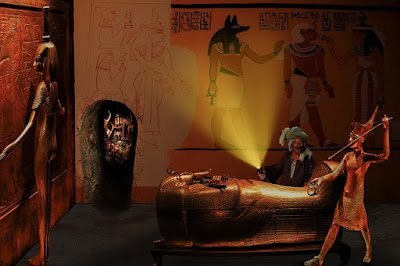Many treasure hunters are actually questioning the existence of the black coffin treasure that was dropped by the US Navy somewhere in the Philippine Sea.
Some says that it's a hoax or fake where there is no such thing while others claim that they have found it.
Here are the following commonly asked questions about the black coffin treasure in the Philippines:
1. What is contained in those black coffin treasures?
Nobody can really confirm the contents of the black coffin treasures. But rumors say that, they contain highly dangerous radioactive element called, "Plutonium".
This is a type of element used in the past second world war in creating the first Atomic Bomb.
2. Are plutonium expensive?
Yes, plutonium is no doubt quite expensive because it is a rare form of element.
2. Are plutonium expensive?
Yes, plutonium is no doubt quite expensive because it is a rare form of element.
In fact, there are only few national suppliers and there are extreme strict limitations to those who can buy it and the amount that the buyers are allowed to purchase.
Due to this reason, dropping those black coffins into the Philippine sea is being questioned by many which seems to prove that the whole idea was a hoax.
3. Why did the US Navy dropped it in the Philippine sea?
According to some rumors, the US Navy ships carrying those black coffin were on their way to deliver the goods but as soon as they heard that the war was finally over, they immediately dropped the boxes since it no longer serves them the intended purpose.
3. Why did the US Navy dropped it in the Philippine sea?
According to some rumors, the US Navy ships carrying those black coffin were on their way to deliver the goods but as soon as they heard that the war was finally over, they immediately dropped the boxes since it no longer serves them the intended purpose.
Other than that, it may also be heavy for their ship that it travels at a slow speed.
But upon hearing the news that the war has ended, they maybe in a hurry to get back home into their families so they had decided to unload the boxes to speed up their ship.
4. Can a plutonium stop a boat's engine?
According to some fishermen who claimed to have discovered the exact location of the black coffins, every time that they passes their engine-powered boat, it kills off their engine.
4. Can a plutonium stop a boat's engine?
According to some fishermen who claimed to have discovered the exact location of the black coffins, every time that they passes their engine-powered boat, it kills off their engine.
They will only be able to start the engine back when they made it a far away from the site.
5. What's the reward for those who can find and recover the black coffin treasures?
According to the US Military, they are not giving any reward to anyone who can locate or recover the black coffins for them.
5. What's the reward for those who can find and recover the black coffin treasures?
According to the US Military, they are not giving any reward to anyone who can locate or recover the black coffins for them.
But if sold into the black market, it could become quite a huge fortune for the finder.







